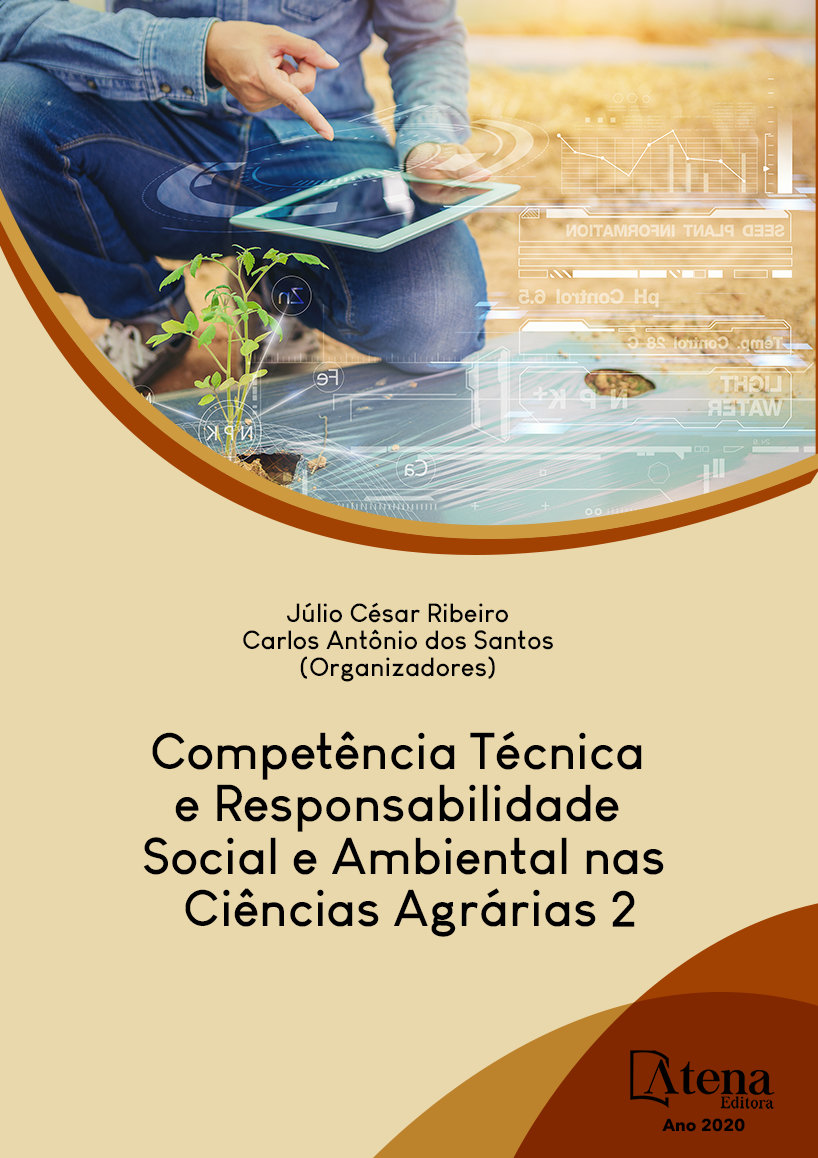
CLASSIFICAÇÃO E CARACTERIZAÇÃO DE SOLOS EM TRÊS DIFERENTES TIPOS DE MANEJO NO NORDESTE PARAENSE
O estudo pedológico dos solos nos
últimos tempos tem apontado à influência de
outros fatores de formação no desenvolvimento
das propriedades e características dos solos.
Diante do exposto, objetivou-se com esse
trabalho classificar e caracterizar solos em três
sistemas de manejo como o plantio de espécies
florestais, floresta secundaria e floresta
secundaria enriquecida com espécies florestais
potenciais no Nordeste Paraense, com base
nos atributos físico-químicos e na morfologia, a
fim de ampliar e contribuir para o conhecimento.
Assim, foram estudados diferentes perfis dos
sistemas de manejo: P1 - Área do Plantio onde
foi realizada o plantio de 8 espécies florestais,
entre nativas e exóticas, P2 - Área Controle
composta por uma capoeira de floresta
secundária e P3 - Área Manejo composta
por uma capoeira de floresta secundaria
onde foi realizada abertura de clareiras e
enriquecimento com espécies potenciais. Os
perfis foram caracterizados morfologicamente
e os horizontes foram analisados quanto as
características químicas e físicas. Os solos
descritos expressaram domínio da estrutura
variando de areia a franco-argilo arenosa com a
profundidade dos horizontes. O pH em H2O foi
aproximadamente entre 4,2 e 5,0. Os valores
expressos de CTC foi de 2,3 cmolc kg-1 no P2 a
5,0 cmolc kg-1 no P3, com predomínio de íons
de hidrogênio e alumínio, sendo considerados
cátions tóxicos. Quanto às características
químicas, os solos foram constatados como
distróficos com baixa saturação de base. Por
meio do estudo, verificou-se discreta a influência
dos sistemas de manejo na formação dos solos
analisados.
CLASSIFICAÇÃO E CARACTERIZAÇÃO DE SOLOS EM TRÊS DIFERENTES TIPOS DE MANEJO NO NORDESTE PARAENSE
-
DOI: 10.22533/at.ed.4242022011
-
Palavras-chave: Pedologia, floresta secundária, granulometria, atributos físicoquímicos.
-
Keywords: Pedology, secondary forest, granulometry, physicachemical attributes.
-
Abstract:
In the last decades, the pedological study of soils, has pointed to
the influence of other formation factors in the development of the properties and
characteristics of the soils. Given the above, this work aimed to classify and characterize
the soils in three different management systems, such as planting of forest species,
secondary forest and secondary forest enriched with prohibited forest species in
Northeast Paraense, based on physical factors, medicines and morphology, an end to
broaden and contribute to knowledge. For this, different management systems profiles
were studied: P1 - Plantation Area where 8 native and exotic forest species were planted,
P2 - Control Area composed by a secondary forest poultry and P3 - Management Area
composed by a secondary forest poultry where clearings were opened and enriched
with potential species. The profiles were morphologically described and the horizons
characterized for chemical and physical properties. The soils described expressed
structure domain ranging from sand to sandy loam clay with the depth of the horizons.
The pH in H2O ranged approximately between 4.2 and 5.0. The expressed CTC values
ranged from 2.3 cmolc kg-1 in P2 to 5.0 cmolc kg-1 in P3, with predominance of hydrogen
and aluminum ions, being considered toxic cations. Regarding chemical characteristics,
the soils were found to be dystrophic with low base saturation. Through the study the
influence of management systems on the genesis of the analyzed soils was discreet.
-
Número de páginas: 14
- Arystides Resende Silva
- Ítalo Cláudio Falesi
- Gustavo Schwartz
- Bárbara Maia Miranda


